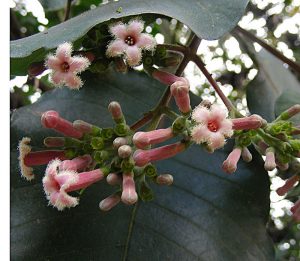The hairy quina quina tree is a native of the warm, moist slopes of the Andes.
In 1532, following the Spanish victory over the Inca empire, Peru became a viceroyalty. The incoming Jesuit missionaries were made aware of the bark of the quina quina tree as a remedy for the endemic fevers by local tribesmen. In the 1630’s, it was recorded that the wife of a viceroy, the Countess of Chinchon, was cured of “tertian fever” following the administration of the powdered bark. This account has been discredited recently, but, in 1742, Linnaeus named the quina quina genus Cinchona in her memory.
By the 1660’s the “Jesuit powder” was known in Europe as a specific for intermittent fevers. Orthodox physicians in England were prejudiced against its use as it did not cure all fevers, preferring Galen’s long-established methods of releasing humors by purging and bleeding. By 1672, a Cambridge apothecary, Robert Talbor, had perfected an infusion of the bark, disguising its bitter taste with wine and opium. He settled upon a safe dosage regime and the success of his secret cure for the ague propelled him to fame and fortune throughout Europe.
It was the “English Hippocrates”, the founder of clinical medicine, Thomas Sydenham, who popularised cinchona bark. He also introduced tincture of opium, “laudanum”, for pain, and tincture of iron for anaemia.
Cinchona remained inordinately expensive as the “fever trees” were reluctant to grow outside their endemic habitat, and much of the bark was spoilt on its long sea journeys. However, European colonialism was at its height, and it became imperative that civil servants and soldiers of the burgeoning British Empire were protected from the lethal effects of the ague, now known as “malaria” (from mala aria, bad air). Although the disease was relatively mild in Europe, it was severe in Africa, Central America and India; the chances of a new resident surviving for more than two years without the protection of cinchona were small. 1
By the 18th century, cinchona bark was included in all Royal Navy ships’ medicine chests, and was routinely taken as a prophylactic on land-based expeditions.
In 1820 the active alkaloid quinine was isolated from the bark by Pelletier and Caventou in Paris, resulting in a dramatic price reduction. Koch in Berlin and Ross in London described its highly successful use as a large-scale prophylactic, limited only by non-compliance and re-infection. 2
The British Empire was floated on a sea of quinine, but it was dependent on the Dutch colonies of Indonesia for a ready supply of the raw material, the cinchona bark. This supply abruptly ceased on the Japanese invasion of 1942. America financed the establishment of cinchona plantations in Costa Rica, but not before tens of thousands of troops had died from malignant malaria in the South Pacific theatre of war.
Quinine was never synthesised industrially, but in 1934, German chemists discovered a highly effective substitute in its analogue, chloroquine, regrettably considered to be too toxic to develop. However, in 1944 French troops landing in Tunisia liberated a supply of the German antimalarial Sontochin, handing the stash to the Allied Army. American scientists identified this as chloroquine and by 1947 clinical trials had demonstrated its efficacy and safety as a prophylactic. It was finally licensed for use, becoming, along with DDT, the WHO’s principal weapon in the Global Eradication Malaria Campaign.
Hydroxychloroquine, considered to have less adverse reactions at high doses, was approved for medical use in 1955.
Malaria resistance to chloroquine (CQ) and hydroxychloroquine (HCQ) has developed steadily world-wide (apart from some areas of Latin America and India), but HCQ remains as a safe and effective treatment for the auto-immune diseases lupus erythematosus and rheumatoid arthritis, and for hepatic amoebiasis.
CQ and HCQ are included as antimalarials in the 2019 WHO Model Lists of Essential Medicines “for a basic health-care system, listing the most efficacious, safe and cost-effective medicines for priority conditions”. 3
A 2018 review demonstrated that the incidence of retinal damage after five years of treatment with HCQ is under 1%, 4 and a systematic review of the medical literature identified a grand total of 127 patients having been reported with significant cardiac complications following treatment with high cumulative doses of CQ or HCQ for a median of seven years. 5
Furthermore, both CQ and HCQ are safe during pregnancy. 6
India reports having around 6.8 million cases of malaria a year with a mere 8,000 deaths. HCQ is available over the counter from every pharmacy at a cost of 10 rupees (£0.10) per 400mg tablet. India has the capacity to manufacture 350 million (35 crore) tablets of HCQ a month. This is sufficient to maintain its own stock of 10 crore and to export to “friendly countries”.
President Trump’s recent imperious demand has been fulfilled by a contribution 3.582 million (35.82 lakh) tablets of HCQ and nine metric tons of the active pharmaceutical ingredient.
The Indian Council of Medical Research has recommended the prophylactic use of HCQ for all health care workers and for families of COVID-19 patients.
The governments of Italy and France now allow doctors to prescribe HCQ for COVID-19 prophylaxis and curative treatment. Doctors of 30 countries currently prescribe HCQ according to a recent Sermo poll.
Why this enthusiasm for CQ and HCQ?
CQ came back into focus during a repurposing exercise funded by charitable organisations to identify established drugs with the potential to treat diseases not previously considered. This novel approach to drug development makes use of published data concerning dosage, toxicology and mechanisms of activity, resulting in a speedy process to bring suitable candidates to clinical trial.
CQ was one of these candidates, and in 2004/5 laboratory (in vitro) testing demonstrated a convincing activity against SARS-CoV, the closely related causative predecessor of COVID-19, SARS-CoV 2 7, 8; enough evidence to convince The Bill and Melinda Gates Foundation to fund two trials to study the use of HCQ as a prophylactic agent for COVID-19.
As Colson, Rolain and Raoult point out, “chloroquine is perhaps one of the most prescribed drugs in the world. As a matter of fact, all Europeans visiting malaria-endemic geographical areas for decades received chloroquine prophylaxis and continued it for 2 months after their return. In addition, hydroxychloroquine has been used for decades at much higher doses (up to 600mg/day) to treat autoimmune diseases. It is difficult to find a product that currently has a better safety profile than chloroquine… furthermore, its cost is negligible. Hence, its possible use both in prophylaxis in people exposed to the novel coronavirus and as a curative treatment will probably be promptly evaluated by our Chinese colleagues…”. 9
A number of small trials of HCQ have reported variable success in the curative treatment of COVID-19, but they lack the rigour of large-scale formal studies which could take many months to complete. However, through long experience, it is known that HCQ is safe at recommended dosages, especially at the low doses required for prophylaxis.
References
These are unique identifiers used by PubMed.
Type the number in your search bar using PMID as a prefix
1. PMID 29737660 – On the history of Cinchona bark in the treatment of Malaria
2. PMID 28169590 – Evaluating Cinchona bark and quinine for treating and preventing malaria
3. PMID 32203437 – Insights from nanomedicine into chloroquine efficacy against COVID-19
4. PMID 28989103 – Antimalarial drug toxicities in patients with cutaneous lupus and dermatomyositis: A retrospective cohort study
5. PMID 29858838 – Cardiac Complications Attributed to Chloroquine and Hydroxychloroquine: A Systematic Review of the Literature
6. PMID 29737455 – Current and Future Use of Chloroquine and Hydroxychloroquine in Infectious, Immune, Neoplastic, and Neurological Diseases: A Mini-Review
7. PMID 15351731 – In vitro inhibition of severe acute respiratory syndrome coronavirus by chloroquine
8. PMID 16115318 – Chloroquine is a potent inhibitor of SARS coronavirus infection and spread
9. PMID 32070753 – Chloroquine for the 2019 novel coronavirus SARS-CoV-2




